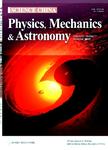The mechanisms of contaminants release due to incipient motion at sediment-water interface
The mechanisms of contaminants release due to incipient motion at sediment-water interface作者机构:Shanghai Institute of Applied Mathematics and Mechanics Shanghai Key Laboratory of Mechanics in Energy Engineering Shanghai University Key Laboratory of Waterway Dredging TechnologyMinistry of Transport PRC Shanghai Waterway Engineering Design and Consulting Co. Ltd of CCGRP School of Mechatronical Engineering and Automation Shanghai University
出 版 物:《Science China(Physics,Mechanics & Astronomy)》 (中国科学:物理学、力学、天文学(英文版))
年 卷 期:2014年第57卷第8期
页 面:1563-1568页
核心收录:
学科分类:080704[工学-流体机械及工程] 080103[工学-流体力学] 08[工学] 0807[工学-动力工程及工程热物理] 0805[工学-材料科学与工程(可授工学、理学学位)] 0704[理学-天文学] 0801[工学-力学(可授工学、理学学位)]
基 金:supported by the National Natural Science Foundation of China(Grant No.10972134) the State Key Program of National Natural Science of China(Grant No.11032007)
主 题:sediment resuspension suspended particle pore water sediment-water interface contaminants
摘 要:Sediments in many rivers and lakes are subjected to resuspension due to a combination of hydrodynamics. However, the roles of contaminant-contained dissolved and particulate sediments during the resuspension release are rarely studied. This study focuses on the release quantity of contaminants in both water phase and solid phase. Conservative tracer (NaC1) and reactive tracer (Phosphorus) were respectively added to cohesive fine-grained sediments and non-cohesive coarse-grained sediments. A range of typical shear stress was conducted to characterize the time-depended release of contaminants in a laboratory flume. When the sediment started to move, the concentration of contaminant in the overlying water increased with the bed shear stress, but the dissolved contaminants responded faster than the particulate ones. The observed contaminant release process can be divided into three main stages: the initial two hours fast mixing: the release contribution of pore water could reach up to 75%; the middle 4-6 h adsorption: the partitioning coefficient of contaminant between water phase and solid phase decreased over the time, and the adsorption of contaminates from resuspended sediment dominated the negative release; the last equilibrium stage: the desorption and adsorption reached equilibrium, and the reactive contaminant made an impact on the water quality in the solid phase. The existing formulas to evaluate the release flux are far from practice meaning as the sediment contaminants undergo a very complex release process.



